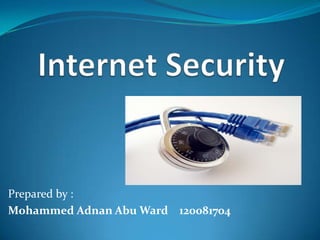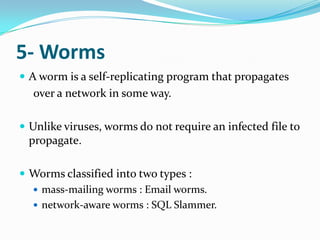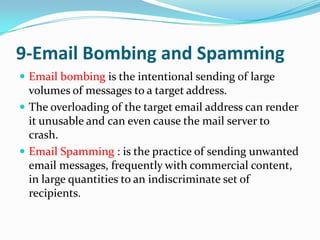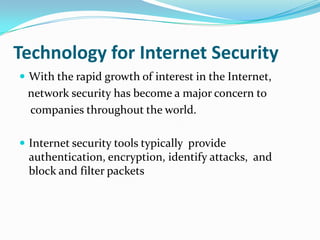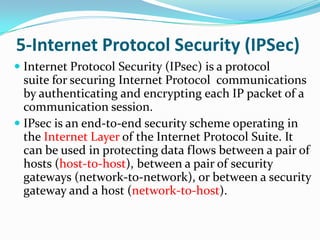This document discusses internet security. It begins by introducing some key computer security attributes like confidentiality, integrity, availability and privacy. It then provides statistics on internet usage growth over time. The document outlines various types of common attacks such as viruses, worms, Trojans, hacking and denial of service attacks. It also discusses technologies used for internet security including cryptography, firewalls, intrusion detection systems and anti-malware software. The document concludes that internet threats will continue as long as information is accessible online, so security is critical.
